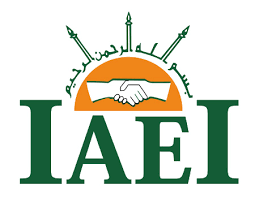Islamic Fiscal Policy
A Scientometric Analysis Using R
DOI:
https://doi.org/10.58968/iem.v1i1.121Keywords:
Islamic fiscal, Fiscal policy, ScientometricAbstract
This scientometric research looks at the current situation of various studies on Islamic fiscal policy published in journals that have digital-object identifiers (DOI). This research focuses on the features and trends of keywords, authors, and journals. We use research articles (metadata) from Dimension (https://dimension.ai). The research dataset was found using a search that was last updated on May 31, 2022. A descriptive statistical approach was used to determine the bibliometric map, and bibliometric analysis was performed using R Biblioshiny. In recent years, there has been a substantial increase in the number of studies addressing the topic of Islamic fiscal policy. Many publications publish on this topic, the most prominent of which is the United Nations Treaty Series journal, which features multiple authors exploring the topic using a variety of keywords. Chouwdhury MA, Kuran T, and Mirakhor A are the most prolific authors. The keywords most frequently used are 'Economic, waqf, and public.' This review provides an overview of research trends, keywords, journals, and authors in the most popular papers on Islamic fiscal policy, as well as providing information for academics specializing in this field.
Downloads
References
As-Salafiyah, A., Rusydiana, A. S., & Mustafa, M. I. (2021). Meta analysis on mosque economics. Library Philosophy and Practice, 0_1-14.
Börner, K., Chen, C., & Boyack, K. (2003). Visualizing knowledge domains. Annual Review of Information Science and Technology, 37(1),179–255. https://doi.org/10.1002/aris.1440370106.
Boyack, K., Klavans, R., & Börner, K. (2005). Mapping the backbone of science. Scientometrics, 64(3), 351–374. https://doi.org/10.1007/s11192-005-0255-6.
Chen, C. (2003). Mapping the mind. In Mapping Scientific Frontiers: The Quest for Knowledge Visualization, (pp. 67–99). https://doi.org/10.1007/978-1-4471-0051-5.
Chen, C. (2006). CiteSpace II: Detecting and visualizing emerging trends and transient patterns in scientific literature. Journal of the American Society for Information Science and Technology, 57(3), 359–377. https://doi.org/10.1002/asi.20317.
Del Giudice, M., Di Vaio, A., & Hassan, R. (2022). Digitalization and new technologies for sustainable business models at the ship–port interface: a bibliometric analysis. Maritime Policy & Management, 49:3, 410-446, DOI: 10.1080/03088839.2021.1903600.
Iborra, M., Safón, V., & Dolz, C. (2019). What explains resil- ience of SMEs? Ambidexterity capability and strategic consistency. Long Range Planning,, 53(6), 101947.
Joana, Ana, and Candeias Fernandes. 2021. “The Role of Entrepreneurial Resilience in Forms of Collaboration : A Systematic Literature Review with Bibliometric Analyses.” doi: 10.1108/EMJB-05-2021-0075
Kahf, Monzer. 1987. “The Early Islamic Public Revenues System Synopsis.”
Kuran, Timur. 1992. “1 The Economic System in Contemporary.” 9–47.
Laila, N., Rusydiana, A. S., Irfany, M. I., Imron, H. R., Srisusilawati, P., & Taqi, M. (2020). Energy Economics in Islamic Countries: A Bibliometric Review. International Journal on Energy Economics and Policy, 11(2), 88-95.
Marlina, L., Rusydiana, A. S., Hidayat, P., & Firdaus, N. (2021). Twenty years of Islamic banking in Indonesia: A biblioshiny application. Library Philosophy and Practice (e-journal), 4999.
M. Suparmoko, Keuangan Negara dalam Teori dan Praktik (Yogyakarta: BPFEYogyakarta, 1997), h. 257.
Ortiz‐de‐Mandojana, N., & Bansal, P. (2016). The long‐term benefits of organizational resilience through sustainable business practices. Strategic Management Journal, 37(8), 1615-1631.
Permana, Yudi. 2021. “Al-Kharaj : Jurnal Ekonomi , Keuangan & Bisnis Syariah Wakaf : Tinjauan Fiqh , Dasar Hukum , Dan Implementasinya Di Indonesia Al-Kharaj : Jurnal Ekonomi , Keuangan & Bisnis Syariah.” 3(2):154–68. doi: 10.47467/alkharaj.v3i1.307.
Rianto, M. Nur, and Al Arif. 2012. “Wakaf Uang Dan Pengaruhnya Terhadap Program Pengentasan Kemiskinan Di Indonesia.” 2:17–29.
Rozalinda. (2014). Ekonomi Islam: Teori dan Aplikasinya pada Aktivitas Ekonomi. Jakarta: PT Raja Grafindo Persada.
Rusydiana, A. S., Sanrego, Y. D., & Pratomo, W. A. (2021a). Mathematical modeling on Islamic economics and finance: A scientometric. Library Philosophy and Practice (e-journal), 4834.
Samuelson dan William D. Nordhaus, Makroekonomi: Edisi Keempatbelas, terj. Haris Munandar (Jakarta; Penerbit Erlangga, , 1997), h. 346.
Schneeweiss, Zoe, Murtaugh, Dan, dan Bloomberg Economics. (2020). This How Deeply the Coronavirus Changed Our Behaviors
Skupin, A. (2004). The world of geography: Visualizing a knowledge domain with cartographic means. Proceedings of the National Academy of Sciences, 101(1), 5274–5278. https://doi.org/10.1073/pnas.0307654100.
Tahir, Sayyid. 2013. “Fiscal and Monetary Policies in Islamic Economics : Contours of an Institutional Framework.”
Taqi, M. (2021). Audit Quality Research: A Bibliometric Analysis. Library Philosophy and Practice (ejournal).
Van Eck, N., & Waltman, L. (2007). Bibliometric mapping of the computational intelligence. International Journal of Uncertainty, Fuzziness and Knowledge-Based Systems, 15(05), 625–645. https://doi.org/10.1142/s0218488507004911.
Van Eck, N., & Waltman, L. (2009). How to normalize cooccurrence data? An analysis of some wellknown similarity measures. Journal of the American Society for Information Science and Technology, 60(8), 1635–1651. https://doi.org/10.1002/asi.21075.
White, H. (2003). Pathfinder networks and author cocitation analysis: A remapping of paradigmatic information scientists. Journal of the American Society for Information Science and Technology, 54(5), 423–434. https://doi.org/10.1002/asi.10228.

























